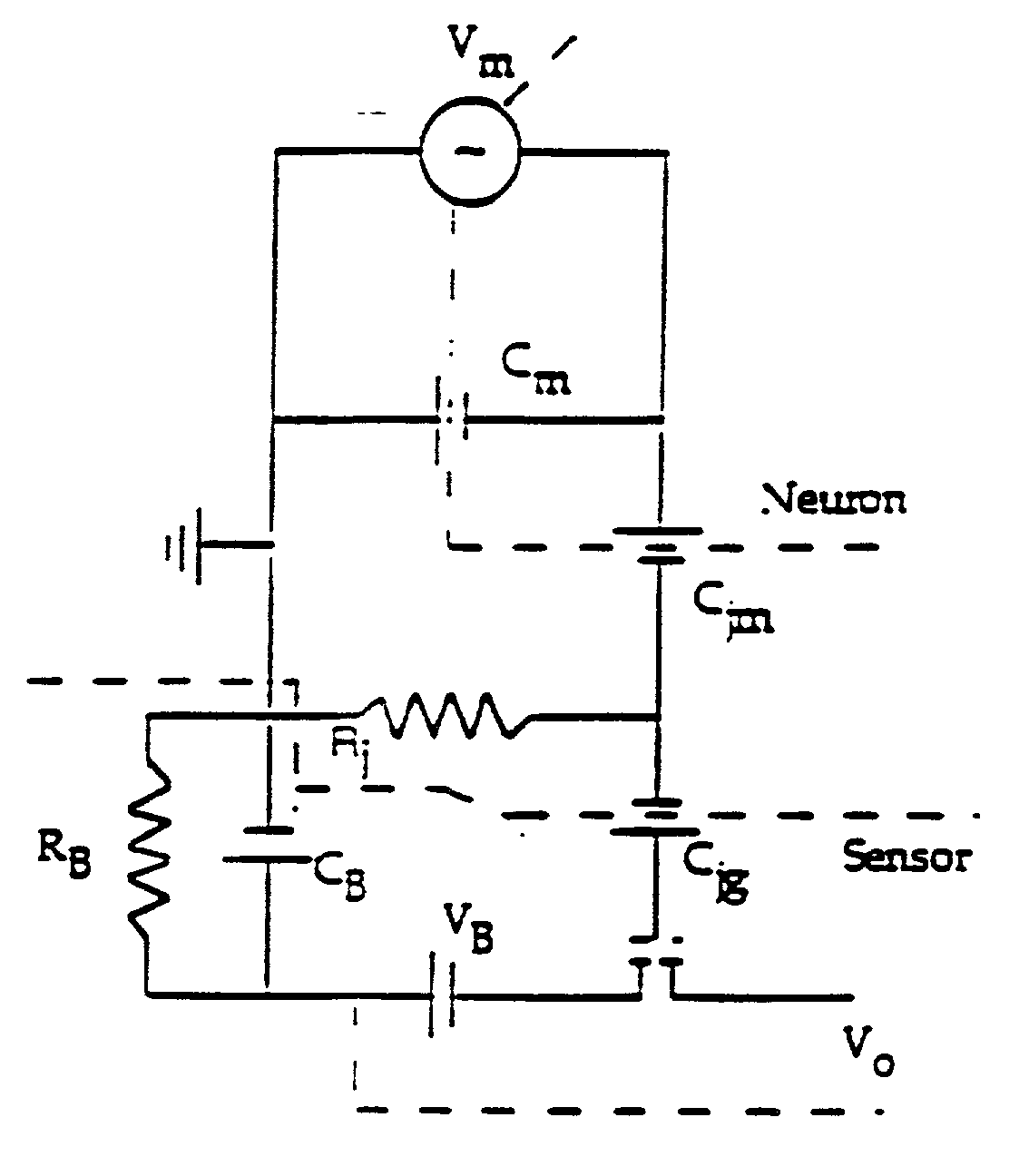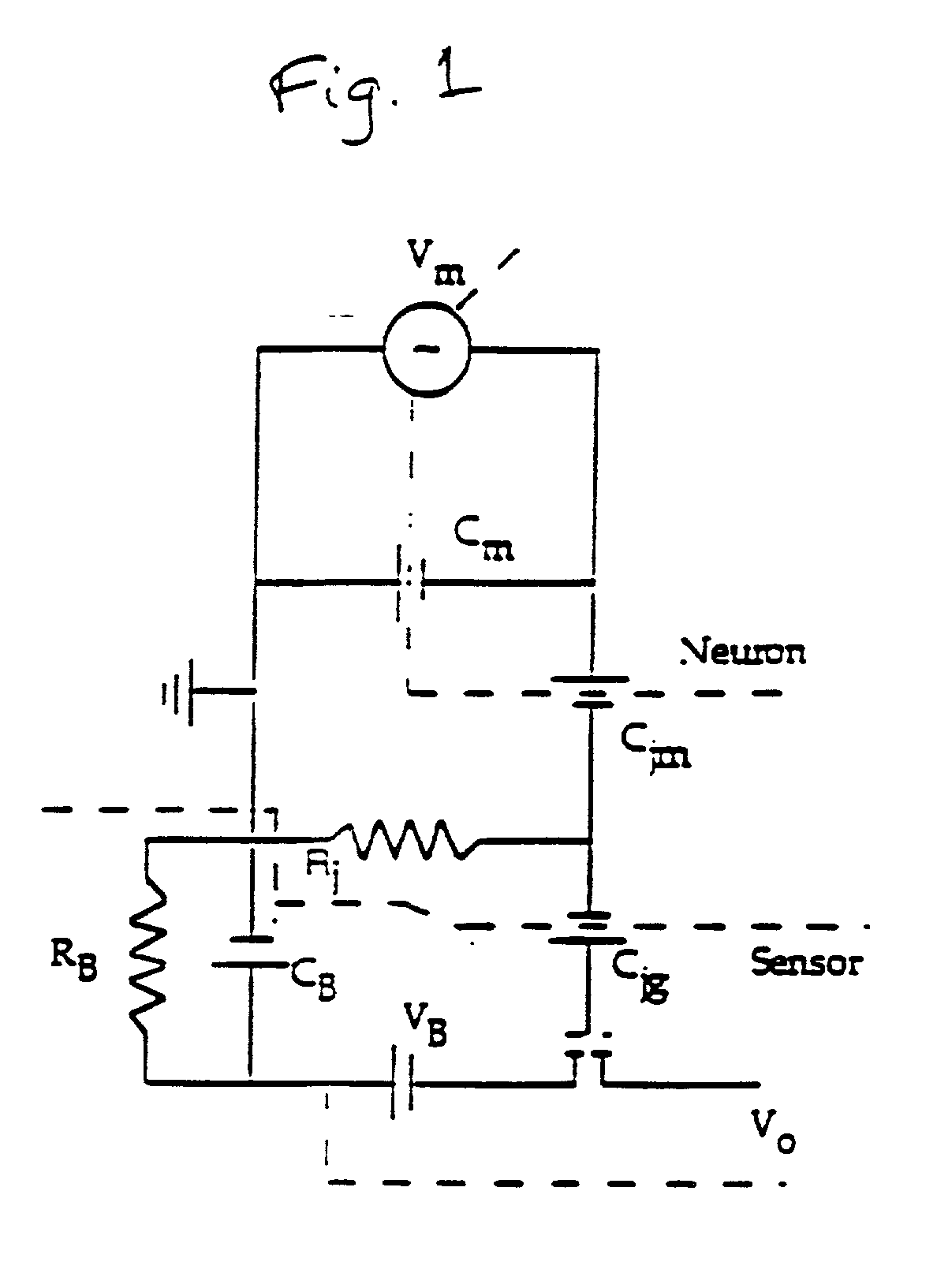Biosensor for use in toxicity assessment and pharmacological screening
a biosensor and toxicity assessment technology, applied in the field of biological sensors, can solve the problems of difficult to relate specific signals to specific functions, inability to control the connection between cells, and inability to reproduce, so as to prevent or inhibit the passage of electrons, the effect of high impedance seal
- Summary
- Abstract
- Description
- Claims
- Application Information
AI Technical Summary
Benefits of technology
Problems solved by technology
Method used
Image
Examples
Embodiment Construction
[0058] According to the principles of the present invention, simple and complex circuits are constructed from mammalian cells, particularly mammalian neuronal cells, oriented in a predetermined way with respect to one another and with respect to one or more transducers to create a biosensor. This sensor can act not only as a screen for known compounds but unknowns as well. These function-based sensors can detect toxins or environmental effects ranging from the obvious (cell death) to those that are more subtle (impairment of function). For instance, substances inhibiting, enhancing, or otherwise affecting the electrical signal output from a natural neuronal network can be found by a screening method utilizing a neuronal network or a biosensor incorporating the network. It is possible under the invention to measure a wide range of responses because neurons and the networks they form are exceedingly sensitive to certain changes in their environment. The development of a solid state de...
PUM
| Property | Measurement | Unit |
|---|---|---|
| width | aaaaa | aaaaa |
| width | aaaaa | aaaaa |
| mean diameter | aaaaa | aaaaa |
Abstract
Description
Claims
Application Information
 Login to View More
Login to View More - R&D
- Intellectual Property
- Life Sciences
- Materials
- Tech Scout
- Unparalleled Data Quality
- Higher Quality Content
- 60% Fewer Hallucinations
Browse by: Latest US Patents, China's latest patents, Technical Efficacy Thesaurus, Application Domain, Technology Topic, Popular Technical Reports.
© 2025 PatSnap. All rights reserved.Legal|Privacy policy|Modern Slavery Act Transparency Statement|Sitemap|About US| Contact US: help@patsnap.com



